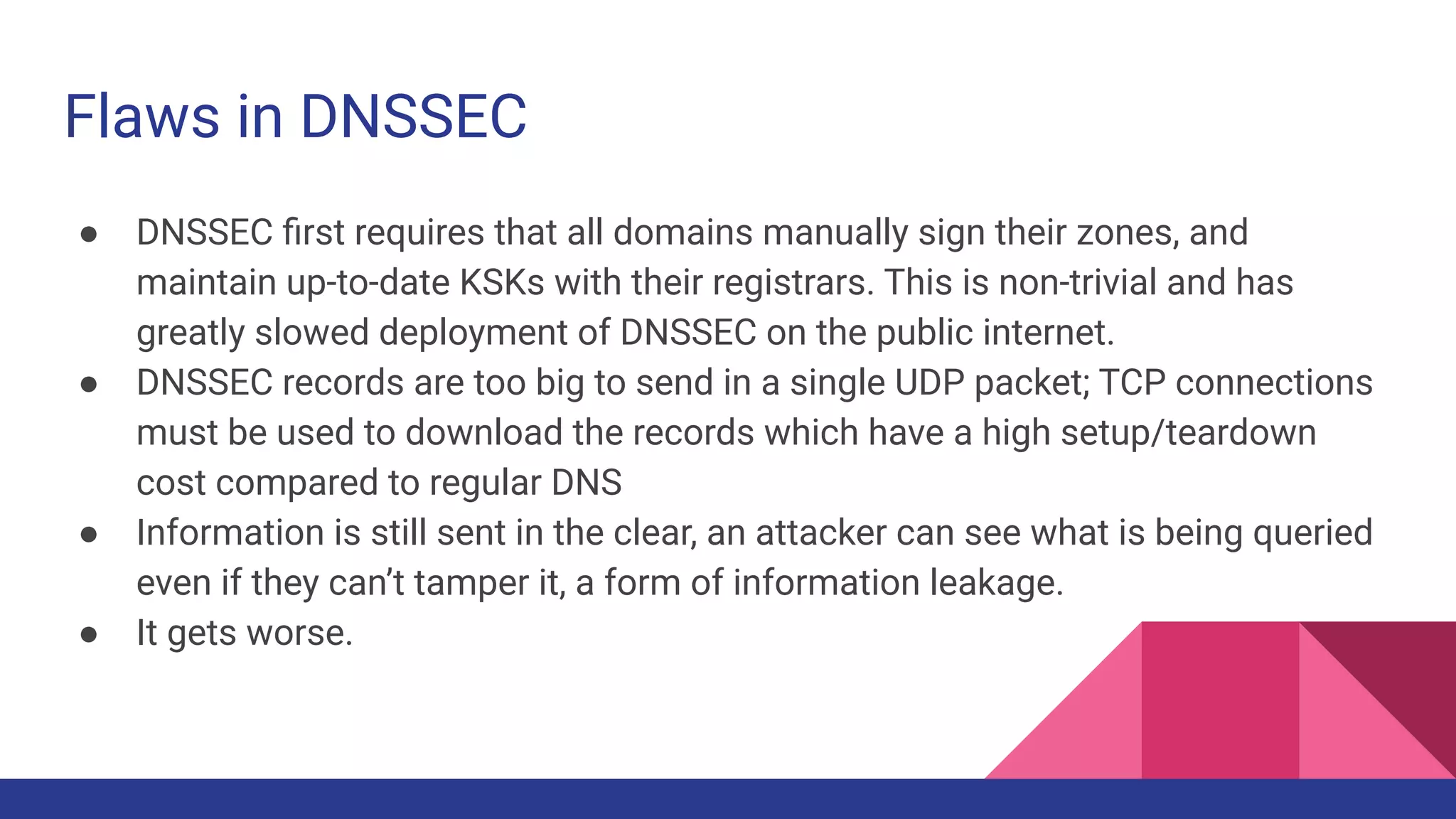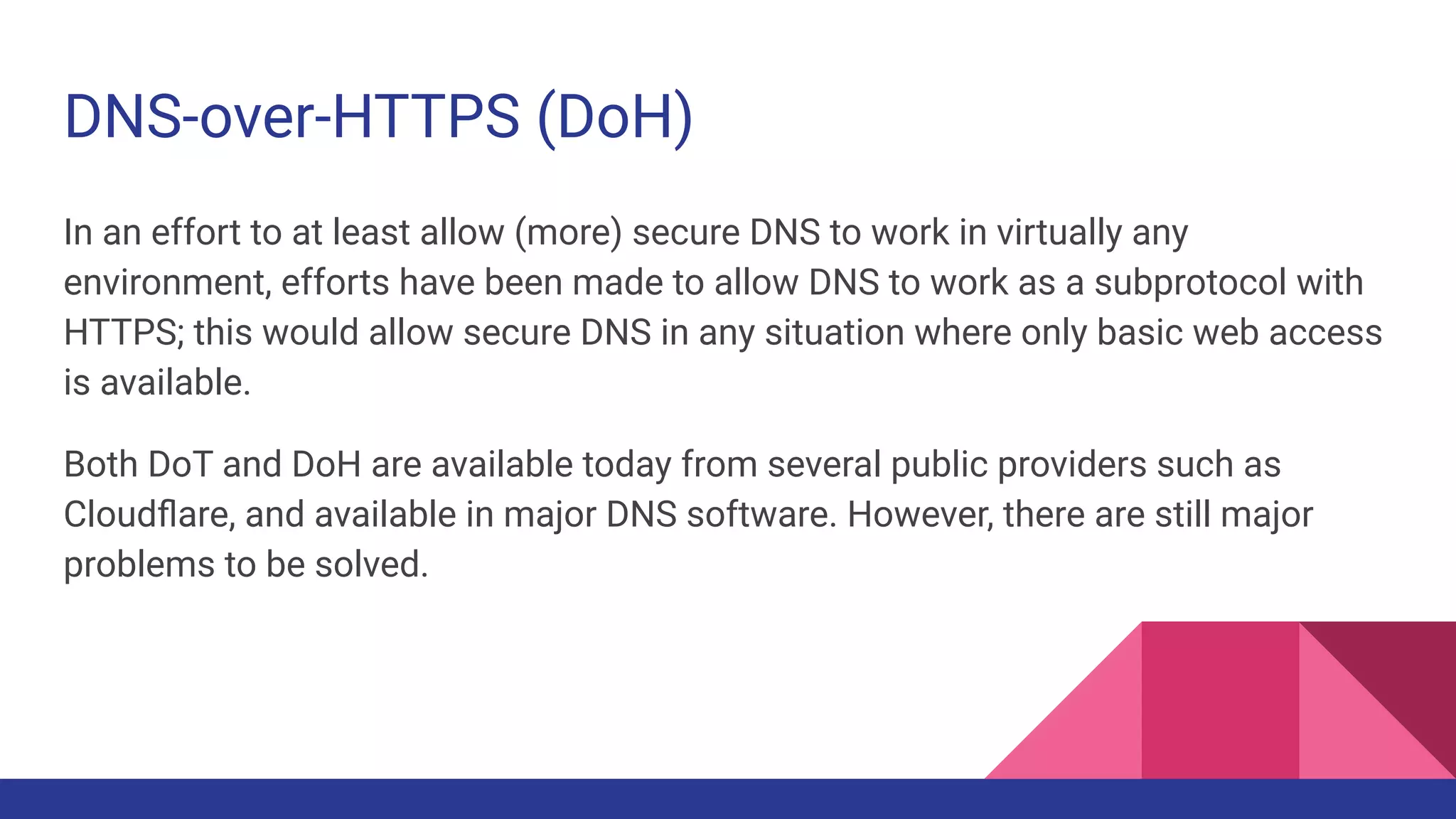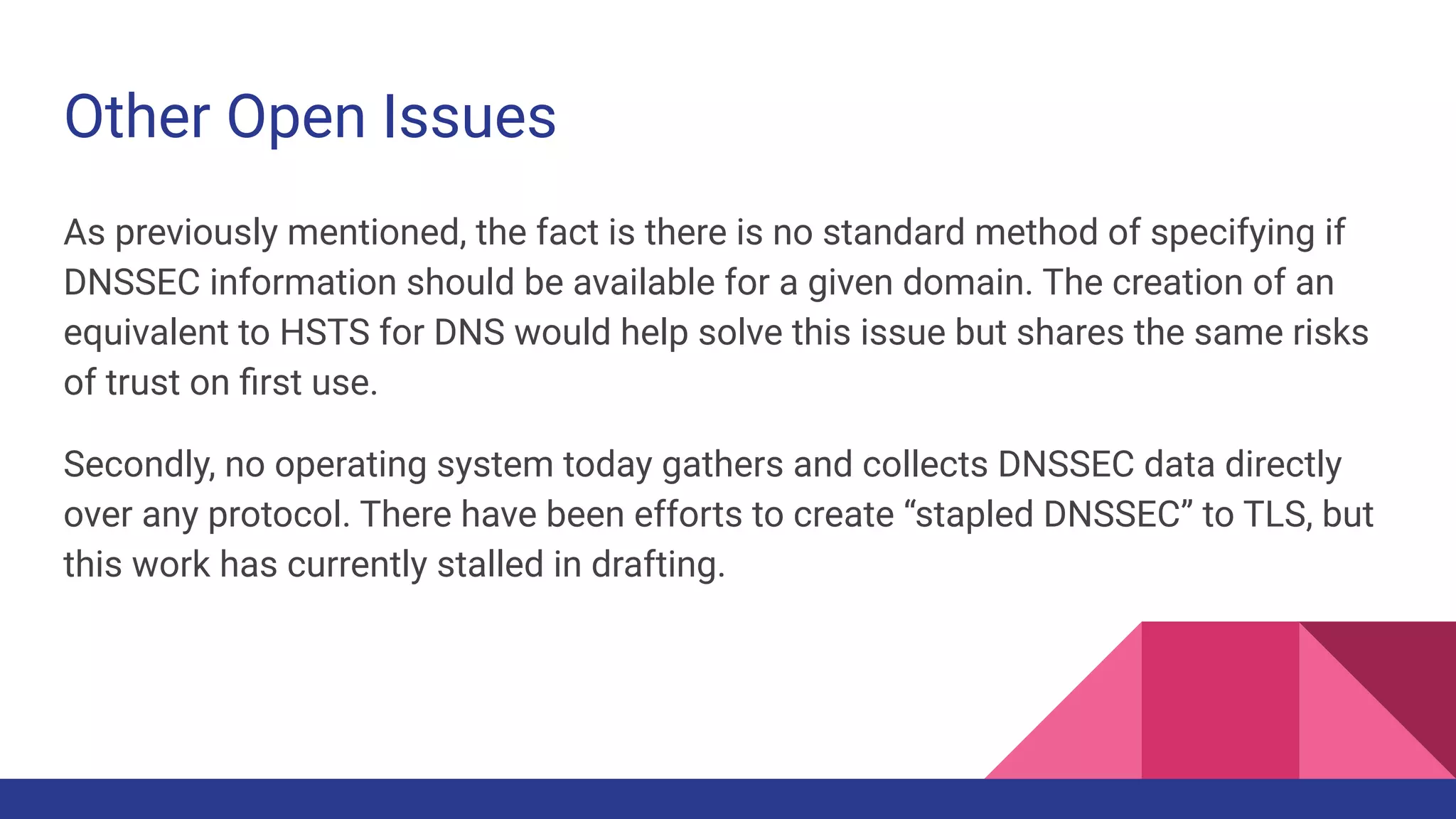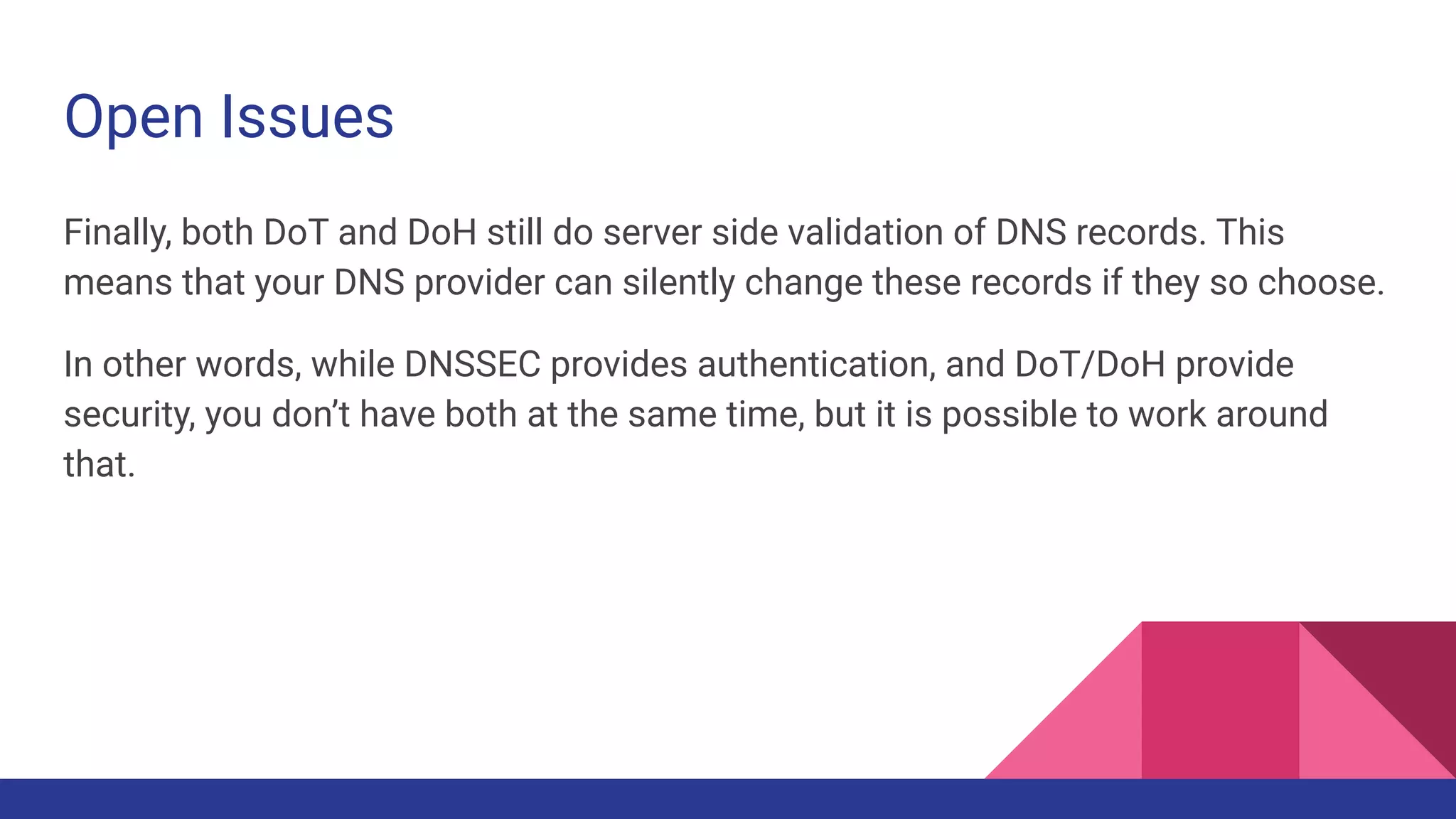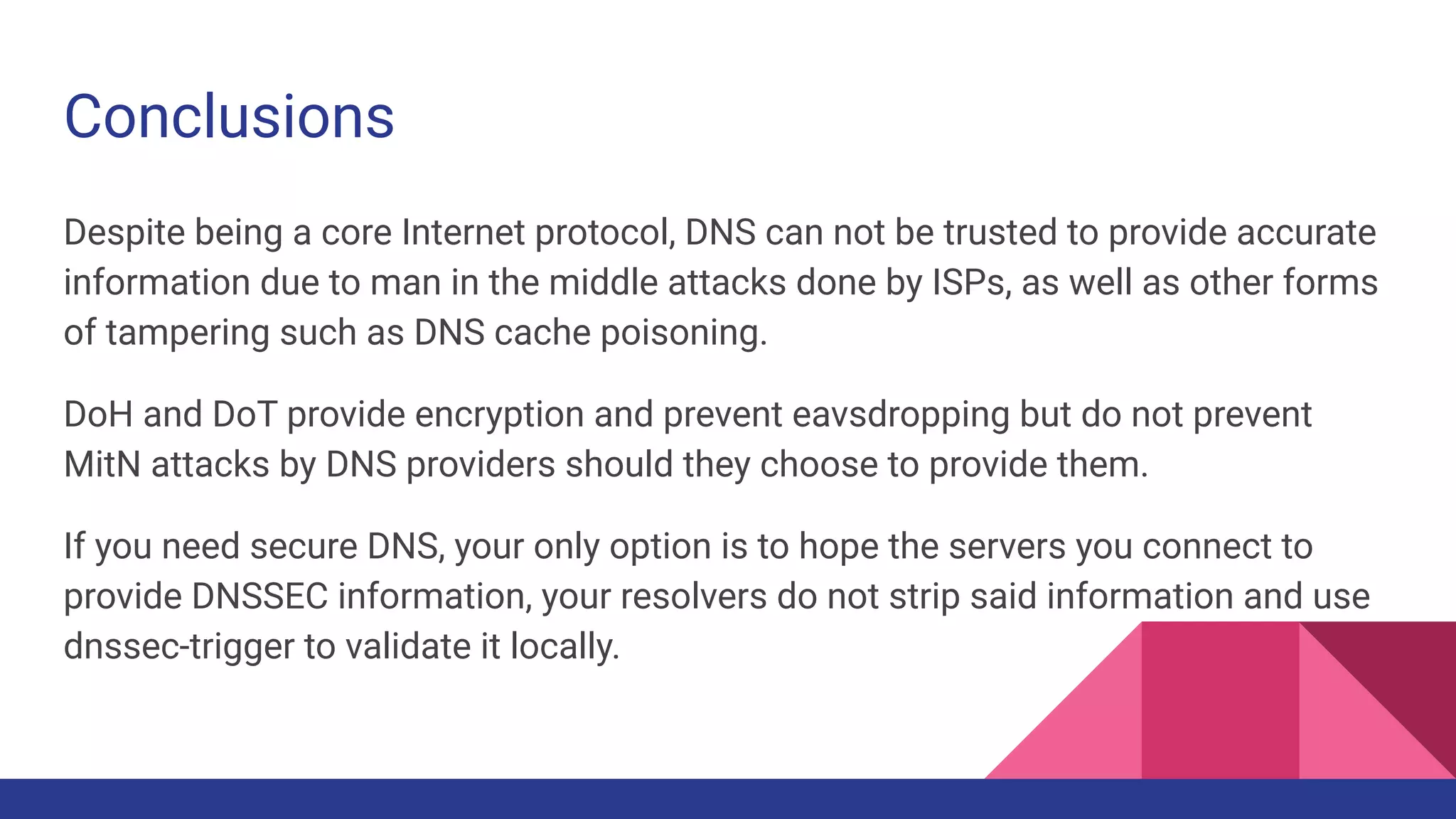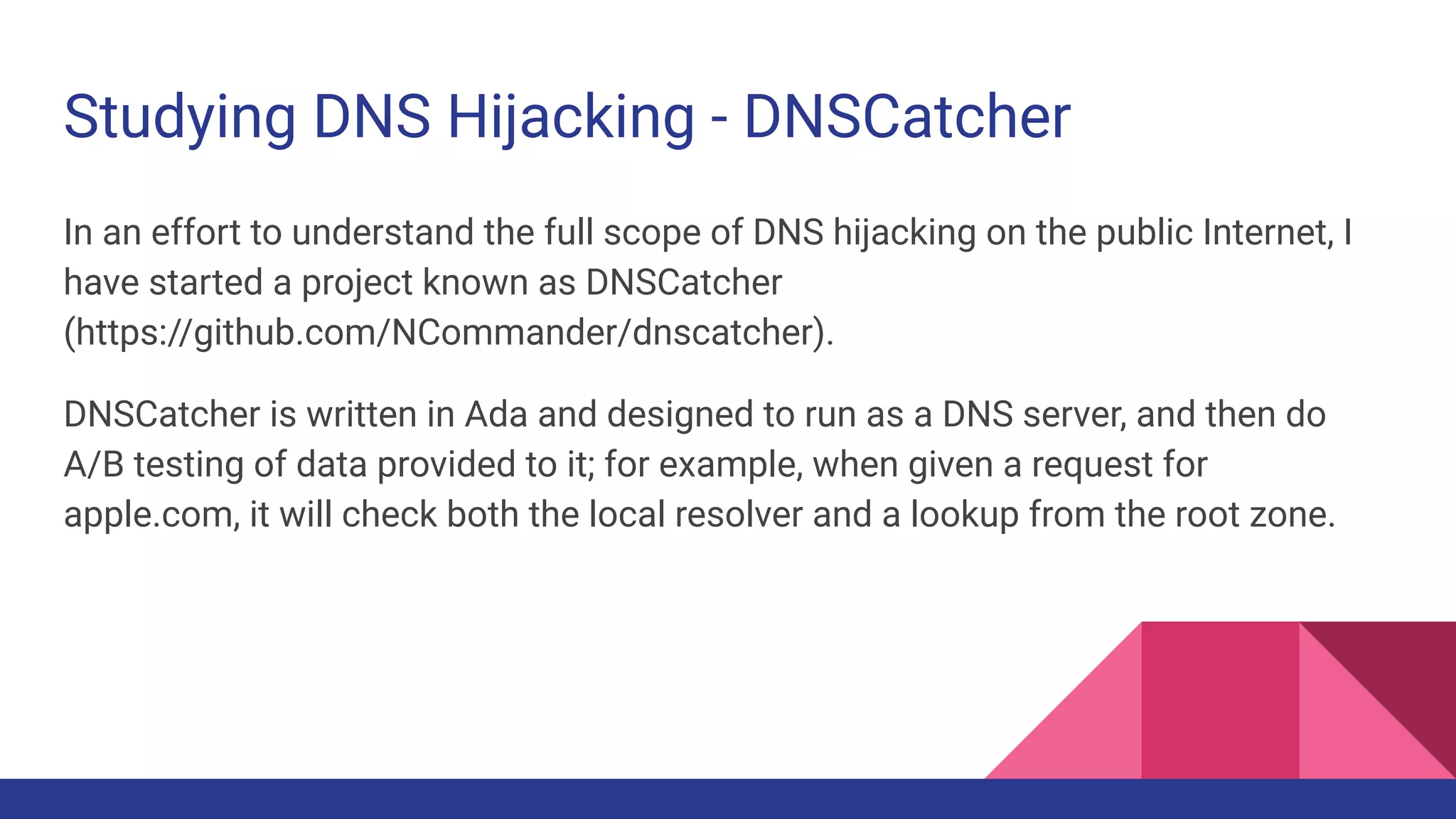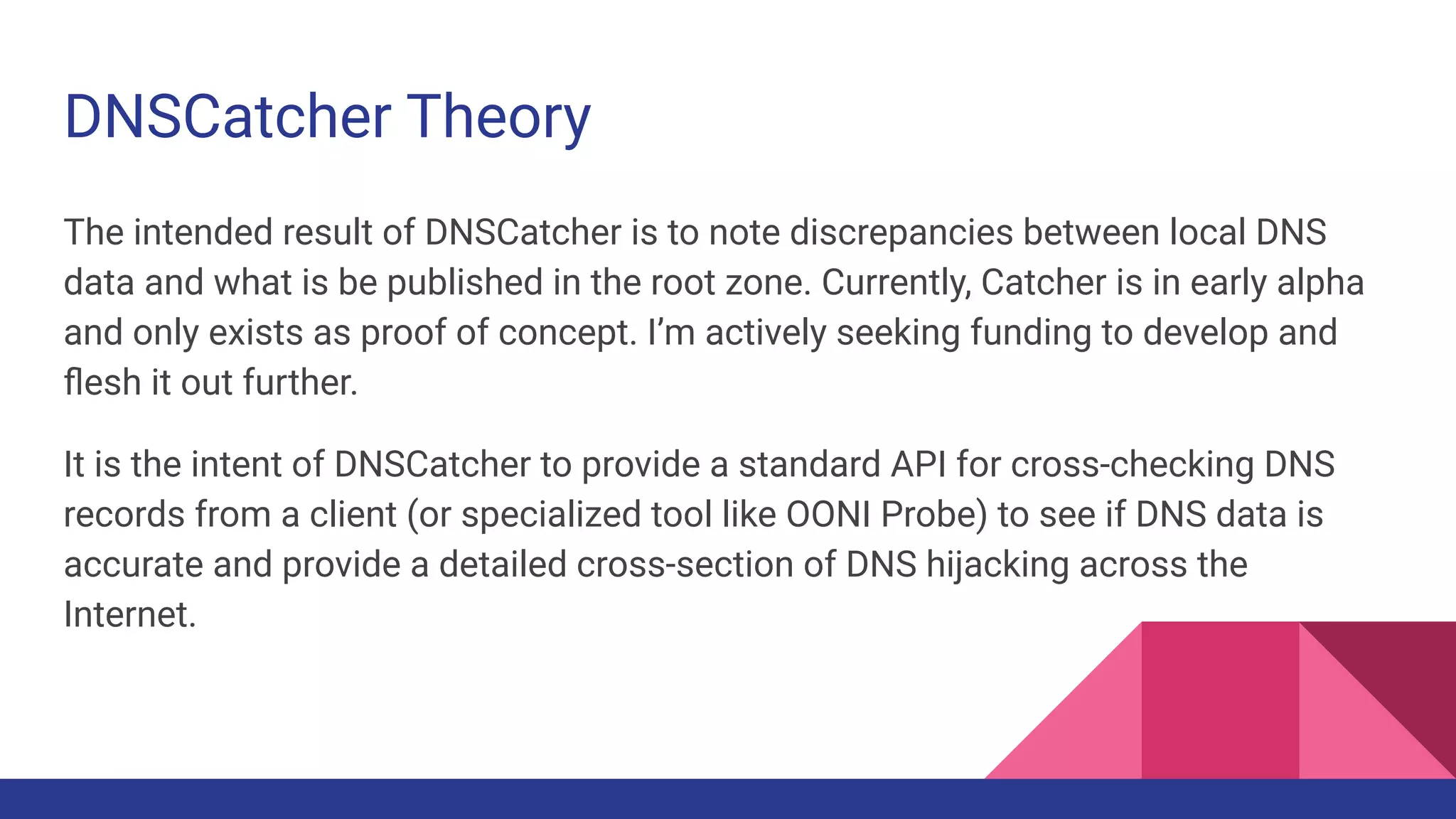The document provides an overview of DNS (Domain Name System) security. It begins with introductions and defines DNS as the core internet protocol that converts domain names to IP addresses. It then discusses some security issues with DNS like hijacking and cache poisoning since DNS data is not encrypted or authenticated. It provides examples of how DNS works through a system of delegation from the root zone down. It explains how DNSSEC aims to address security but has limitations. The document demonstrates DNSSEC in action by showing signed responses from the root zone down to an example domain.

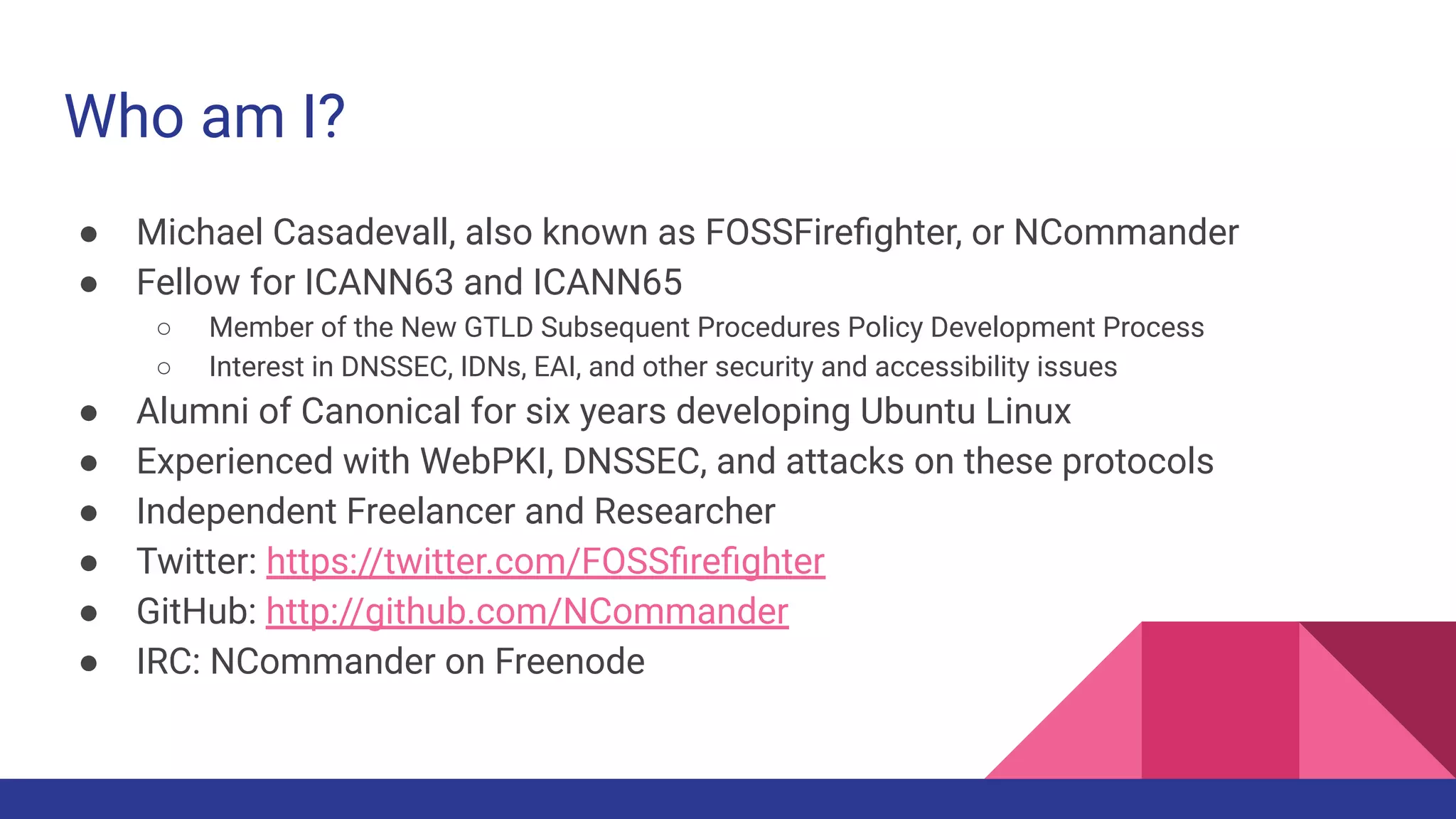
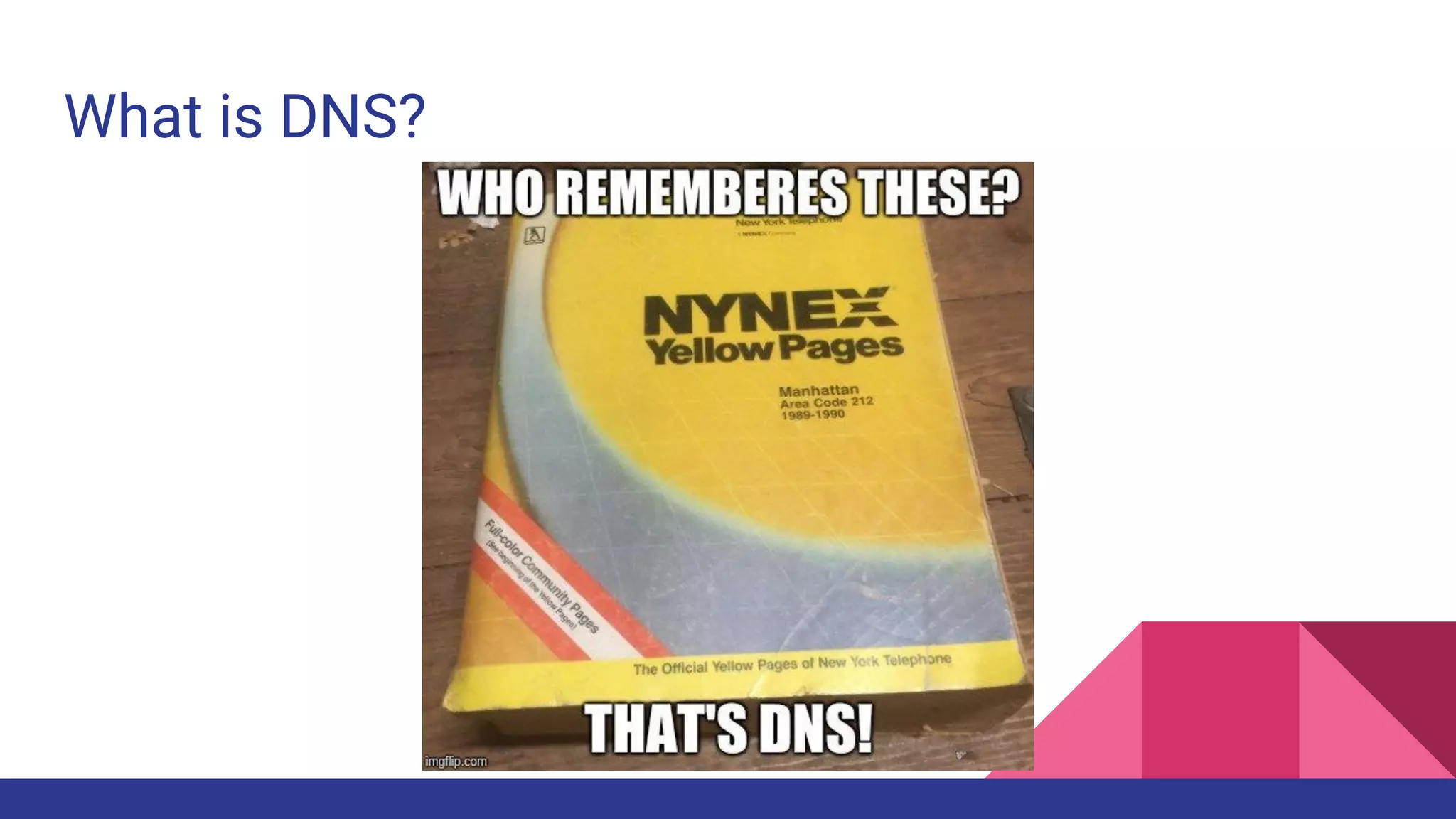







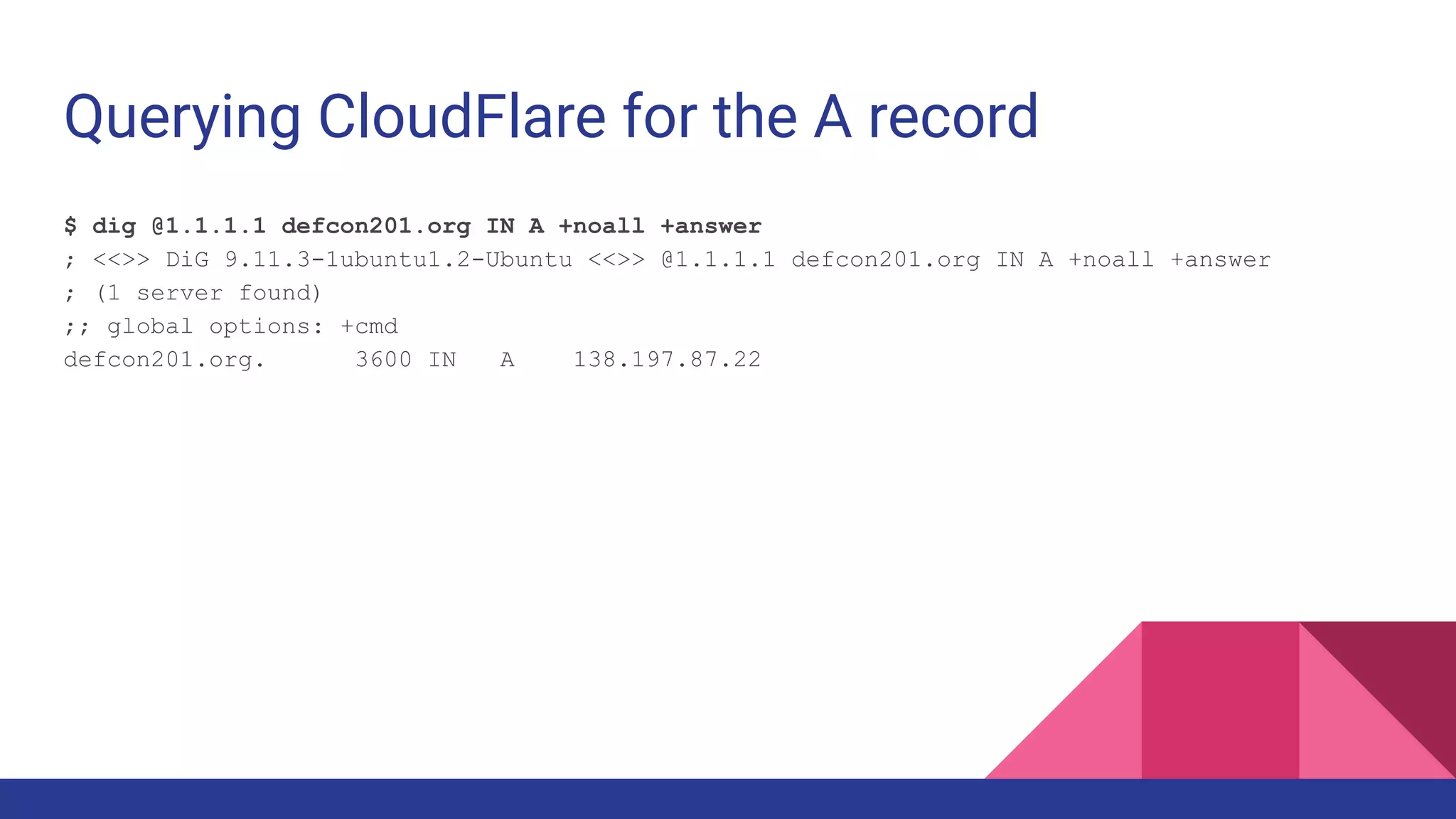

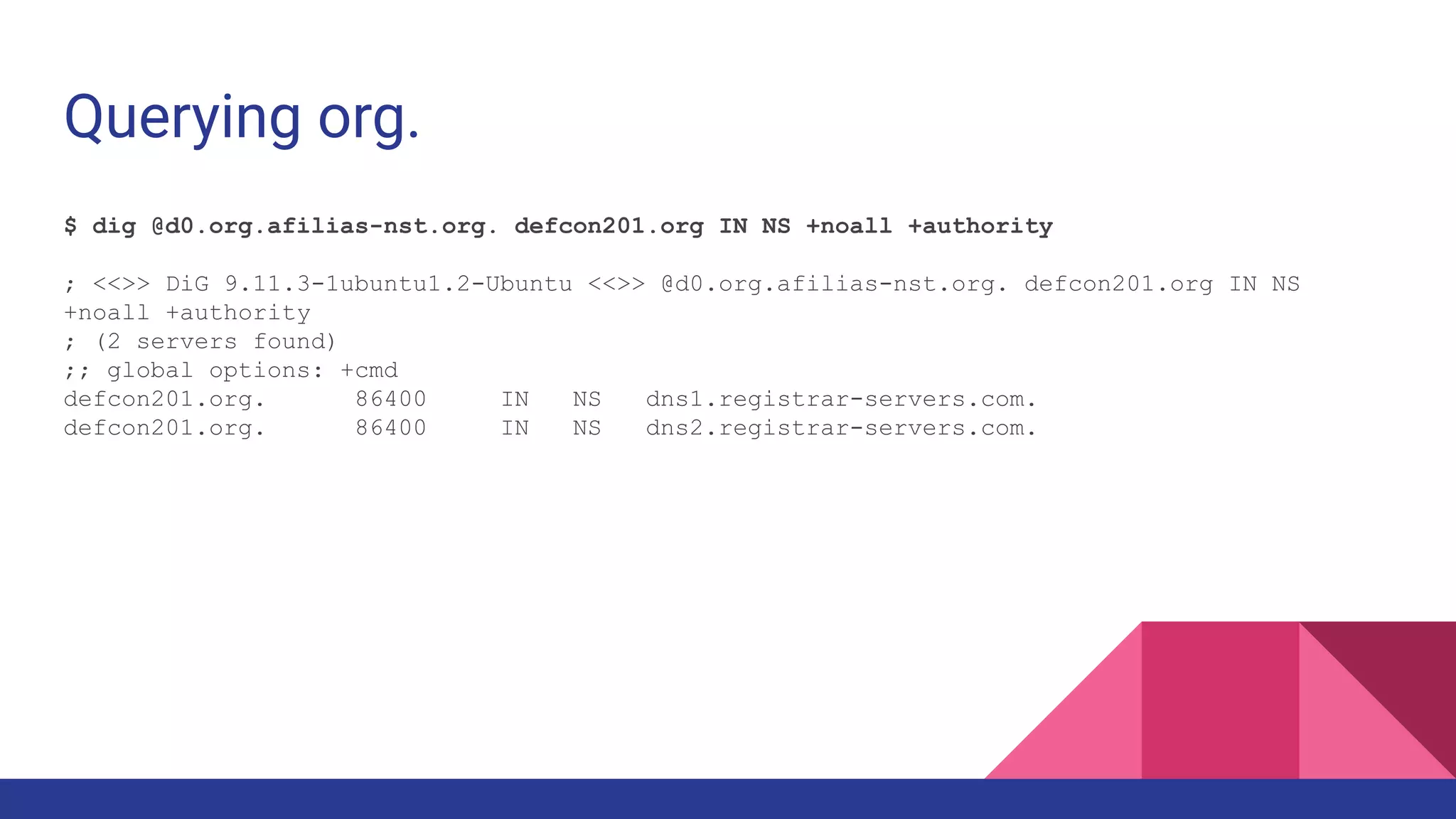







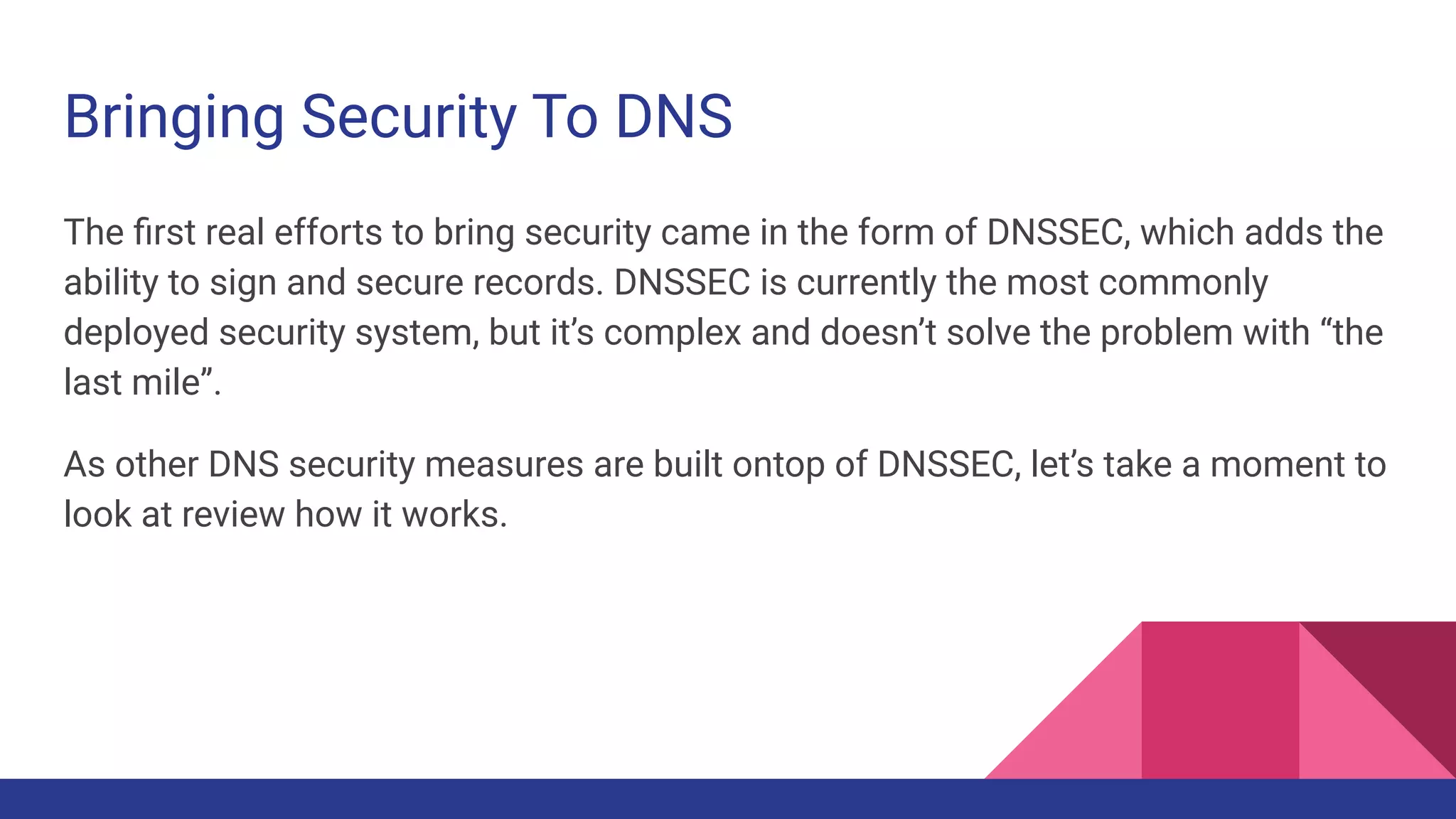
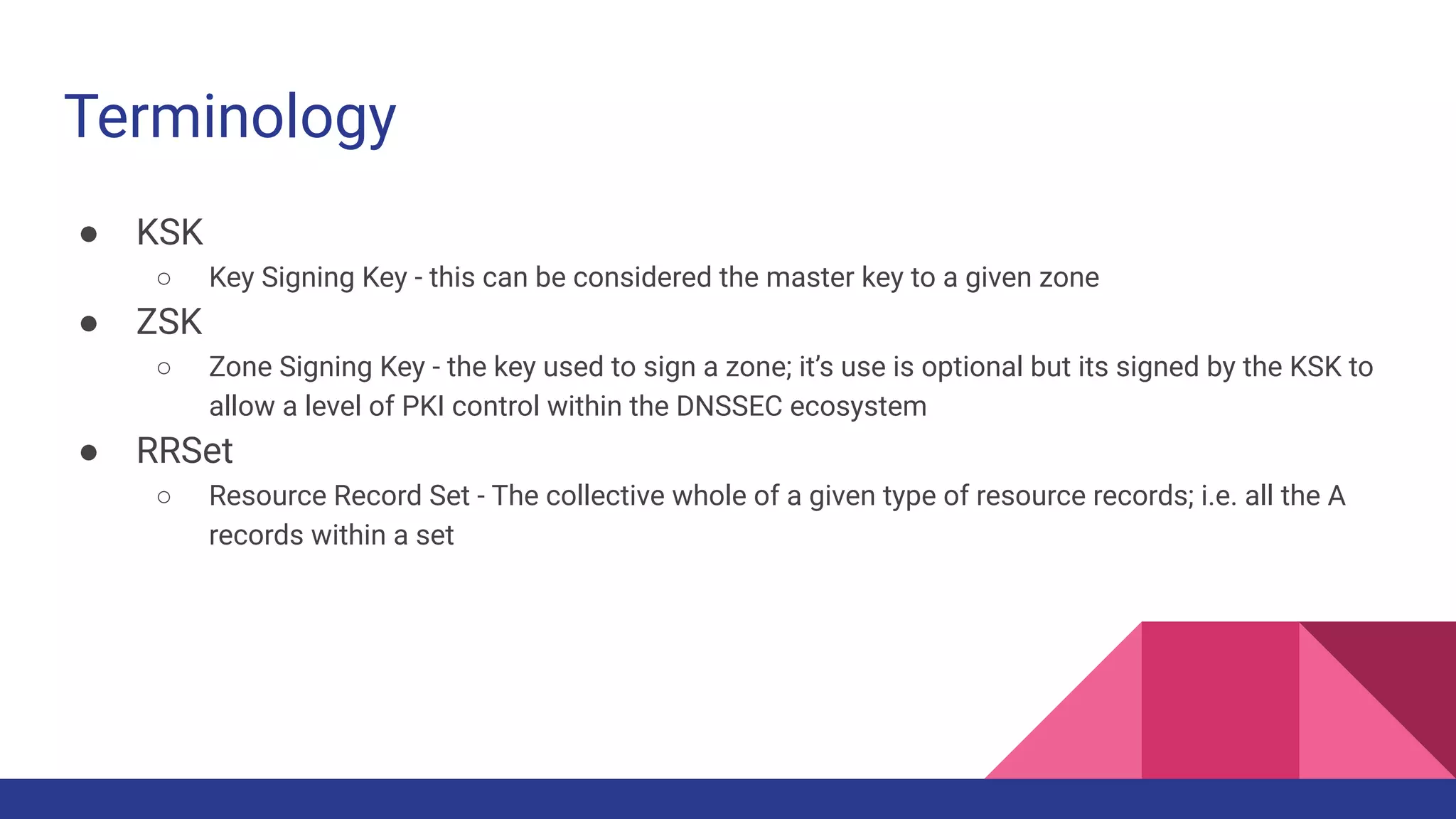



![Root Zone DNSSEC
$ dig @a.root-servers.net org NS +noall +authority +answer +dnssec
org. 172800 IN NS a0.org.afilias-nst.info.
[...]
org. 86400 IN DS 9795 7 1 364DFAB3DAF254CAB477B5675B10766DDAA24982
org. 86400 IN DS 9795 7 2
3922B31B6F3A4EA92B19EB7B52120F031FD8E05FF0B03BAFCF9F891B FE7FF8E5
org. 86400 IN RRSIG DS 8 1 86400 20181129050000 20181116040000 2134 .
lDLXk7k2GrdgxKJR5bruqm0b0JTRShQzQaDCKs+uI8Kf8W99hinWrf3h
WMx28DlRRD1zcAhMK9+67xjTdjCMw1w+d4FIGpmDtBqDI3u22VAvM/h/
TW1Z6NnPEwrlIlgssT2QHDvFir4x/NPSNkgNtIMuy93hKqwdahY1as2N
XdTDAClgpfvHpSu1JqEeAR3/uBVMg0wuHlYWQmrFbBKONwLbfPFEspxf
GmWvRTBjoJRXmK5237lhOSt+0ifU+VMiy26RJgfpOFkhxs51ZgT9v4z2
CHDtFnFwtUf+GGAHjMK35VM0U2TFTBgs/AOArPOj4V7nDSIN7pXwYjhE QyYJOg==](https://image.slidesharecdn.com/dnspresentation-190509130607/75/DNS-Over-HTTPS-by-Michael-Casadevall-26-2048.jpg)

![TLD Signed Response For soylentnews.org
$ dig @a0.org.afilias-nst.info soylentnews.org NS +noall +authority +answer +dnssec
soylentnews.org. 86400 IN NS ns1.linode.com.
[..]
soylentnews.org. 86400 IN DS 60615 8 2
3BC43E5A590598F993D563A3D66936283350FEB80F3C3693C40FCD8A FF1872AF
soylentnews.org. 86400 IN DS 64450 8 2
49245CF329C01E645C269582FFE73B4AAC8830AD6F6B3FE12B1616A7 63EB732A
soylentnews.org. 86400 IN RRSIG DS 7 2 86400 20181130152943 20181109142943
6368 org. A9vKMuJ9poUsIf02OkUXOvsdspUbyi7BiP6JHPm2oES+55opsbYFyquo
ZifHZU5t7YtScWlx9W7DYOj8xc6h7fJU9RL7OdvsJJt6L8bRLdQlVqEd
cng4hwXxp+9GPdQYvsf/l9VqStmnQS+2PaTdtnb+/cM+hpT5qfjyU/s/ sLw=](https://image.slidesharecdn.com/dnspresentation-190509130607/75/DNS-Over-HTTPS-by-Michael-Casadevall-28-2048.jpg)

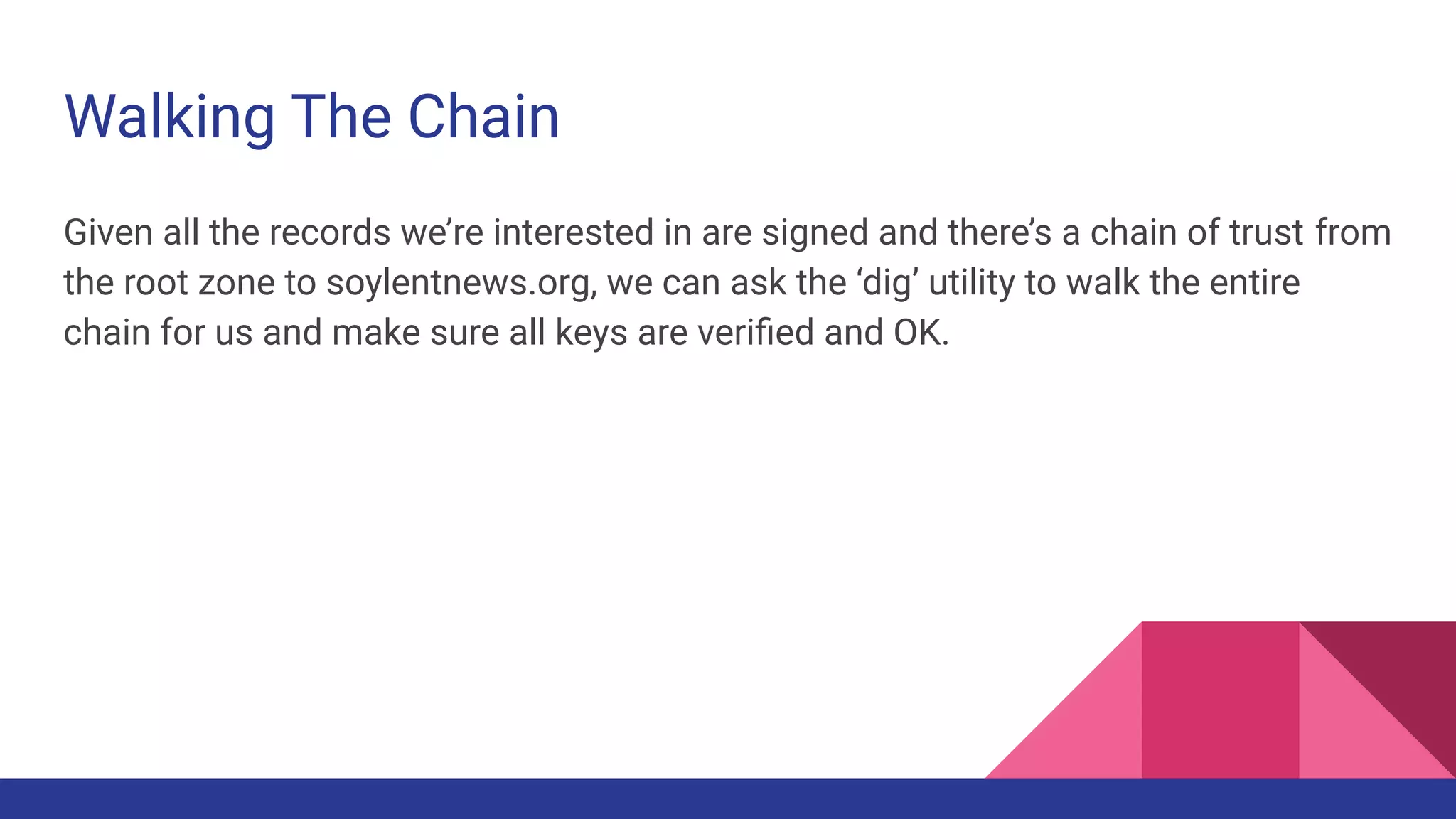
![Chain Walking
mcasadevall@dawntreader:~$ dig @1.1.1.1 +sigchase +trusted-key=./root.keys soylentnews.org.
A +noall
;; RRset to chase:
soylentnews.org. 286 IN A 23.239.29.31
[...]
;; VERIFYING DS RRset for org. with DNSKEY:2134: success
;; OK We found DNSKEY (or more) to validate the RRset
;; Ok, find a Trusted Key in the DNSKEY RRset: 19036
;; Ok, find a Trusted Key in the DNSKEY RRset: 20326
;; VERIFYING DNSKEY RRset for . with DNSKEY:20326: success
;; Ok this DNSKEY is a Trusted Key, DNSSEC validation is ok: SUCCESS](https://image.slidesharecdn.com/dnspresentation-190509130607/75/DNS-Over-HTTPS-by-Michael-Casadevall-31-2048.jpg)

